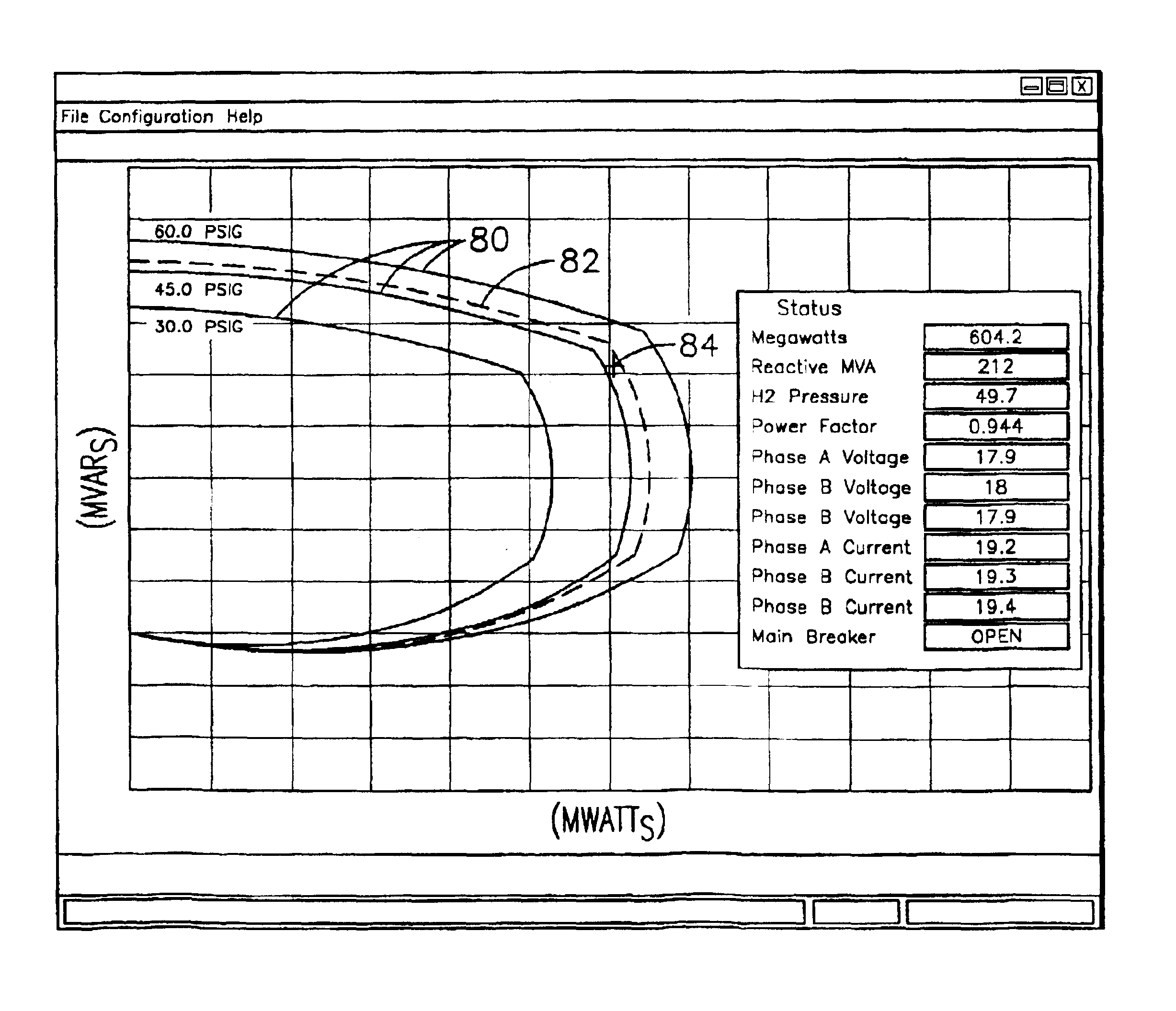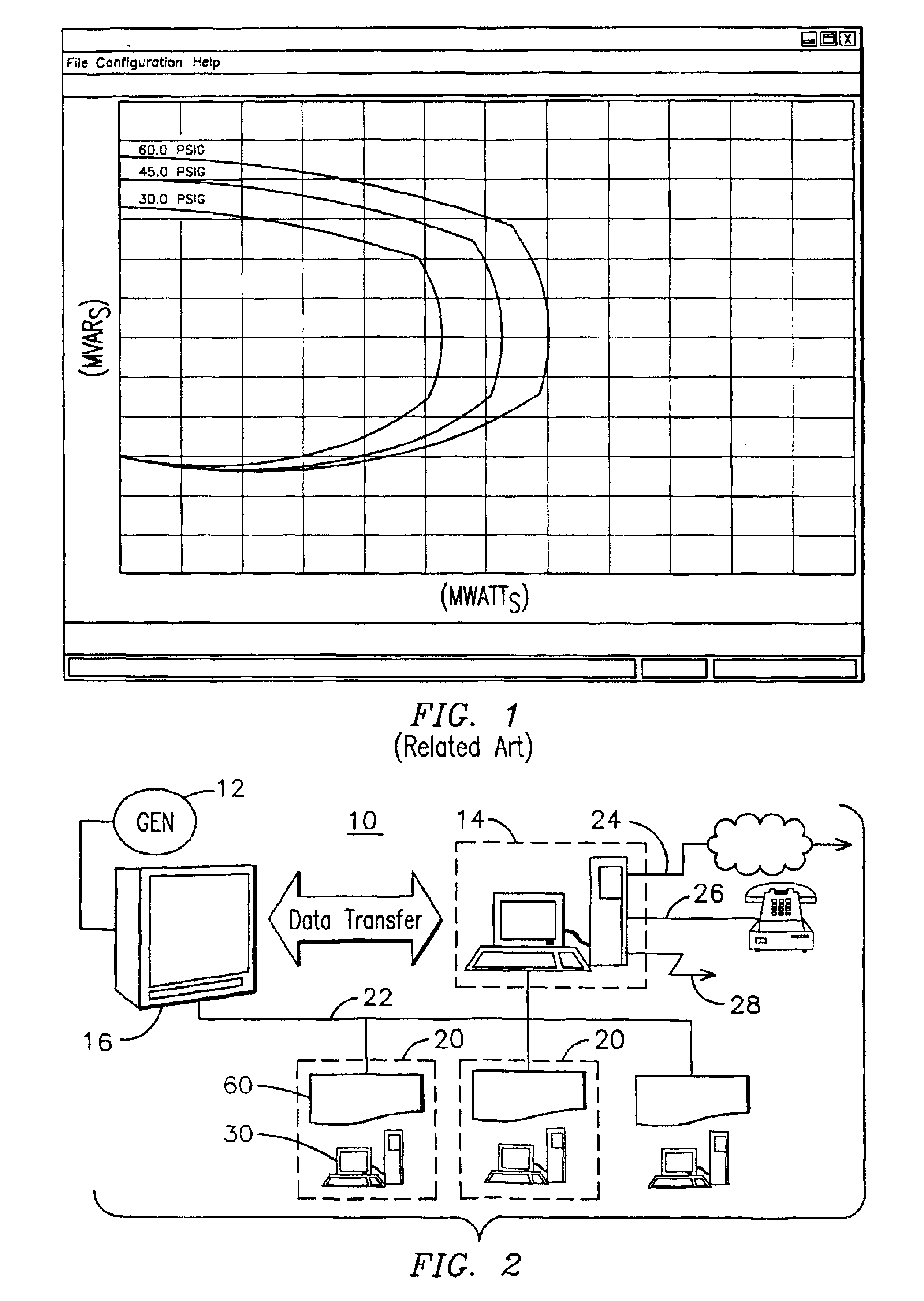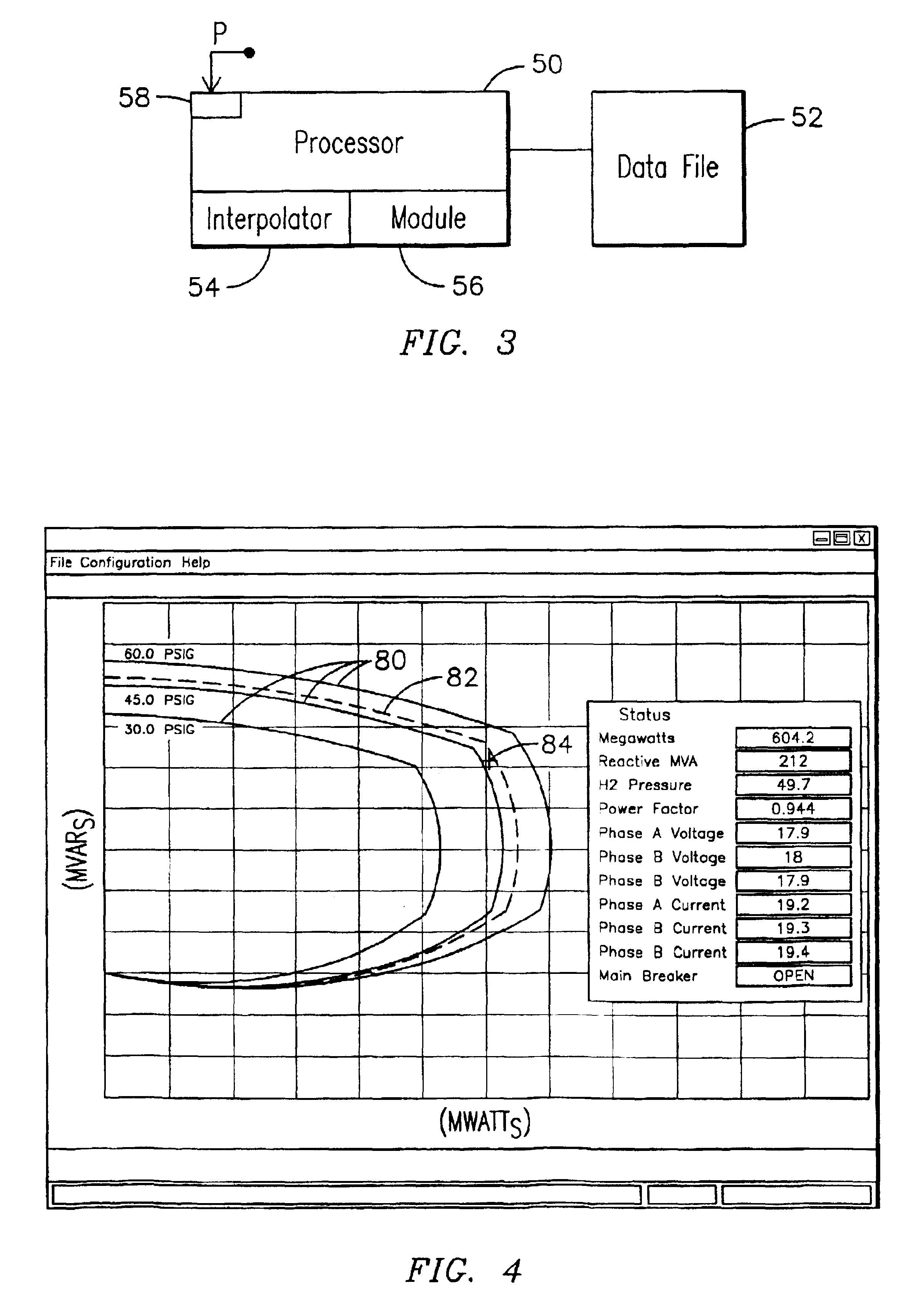Method and system for operating a generator using a dynamic capability curve
a technology of dynamic capability and generator, applied in the direction of electric generator control, dynamo-electric converter control, instruments, etc., can solve the problems of increasing the stator and field current capability limits, under-utilization of the power-generating capability of the generator, and typically limited power produced by the generator. to achieve the effect of rapid and accurate transmission of information to the operator
- Summary
- Abstract
- Description
- Claims
- Application Information
AI Technical Summary
Benefits of technology
Problems solved by technology
Method used
Image
Examples
Embodiment Construction
[0015]A capability curve is a curve that defines the boundaries of the area on a power flow diagram, such as real and reactive power flow diagram, within which a dynamoelectric machine, such as a generator, may be safely operated. The inventor of the present invention has innovatively recognized a way of integrating in a user-friendly manner techniques familiar to operators of the machines with techniques that allow one to more closely track the actual operational conditions of the machine so that the operator is able to rapidly and accurately asses this information without having to undergo any burdensome training, or without having to re-develop new instructional materials.
[0016]FIG. 2 represents an exemplary data communications system 10 that may be used for communicating information to users, such as operators, service personnel, and engineering staff, regarding the operational performance of a generator 12. A server 14 may be connected to a plant computer system 16 to communica...
PUM
 Login to View More
Login to View More Abstract
Description
Claims
Application Information
 Login to View More
Login to View More - R&D
- Intellectual Property
- Life Sciences
- Materials
- Tech Scout
- Unparalleled Data Quality
- Higher Quality Content
- 60% Fewer Hallucinations
Browse by: Latest US Patents, China's latest patents, Technical Efficacy Thesaurus, Application Domain, Technology Topic, Popular Technical Reports.
© 2025 PatSnap. All rights reserved.Legal|Privacy policy|Modern Slavery Act Transparency Statement|Sitemap|About US| Contact US: help@patsnap.com



